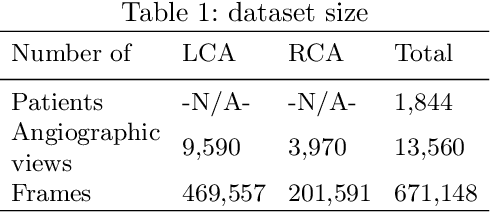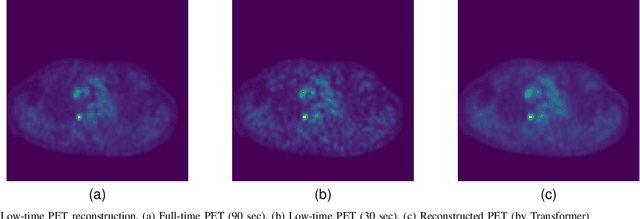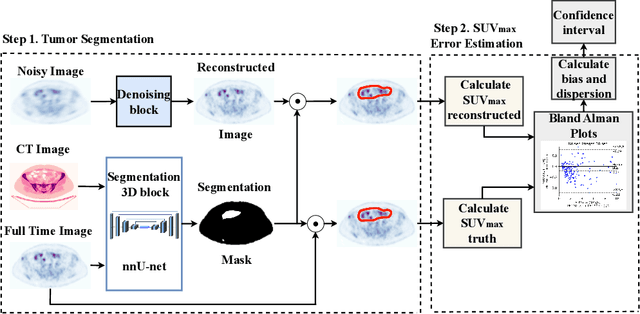Ivan Kruzhilov
End-to-end SYNTAX score prediction: benchmark and methods
Jul 29, 2024



Abstract:The SYNTAX score has become a widely used measure of coronary disease severity , crucial in selecting the optimal mode of revascularization. This paper introduces a new medical regression and classification problem - automatically estimating SYNTAX score from coronary angiography. Our study presents a comprehensive dataset of 1,844 patients, featuring a balanced distribution of individuals with zero and non-zero scores. This dataset includes a first-of-its-kind, complete coronary angiography samples captured through a multi-view X-ray video, allowing one to observe coronary arteries from multiple perspectives. Furthermore, we present a novel, fully automatic end-to-end method for estimating the SYNTAX. For such a difficult task, we have achieved a solid coefficient of determination R2 of 0.51 in score predictions.
Neural network-based coronary dominance classification of RCA angiograms
Sep 13, 2023Abstract:Background. Cardiac dominance classification is essential for SYNTAX score estimation, which is a tool used to determine the complexity of coronary artery disease and guide patient selection toward optimal revascularization strategy. Objectives. Cardiac dominance classification algorithm based on the analysis of right coronary artery (RCA) angiograms using neural network Method. We employed convolutional neural network ConvNext and Swin transformer for 2D image (frames) classification, along with a majority vote for cardio angiographic view classification. An auxiliary network was also used to detect irrelevant images which were then excluded from the data set. Our data set consisted of 828 angiographic studies, 192 of them being patients with left dominance. Results. 5-fold cross validation gave the following dominance classification metrics (p=95%): macro recall=93.1%, accuracy=93.5%, macro F1=89.2%. The most common case in which the model regularly failed was RCA occlusion, as it requires utilization of LCA information. Another cause for false prediction is a small diameter combined with poor quality cardio angiographic view. In such cases, cardiac dominance classification can be complex and may require discussion among specialists to reach an accurate conclusion. Conclusion. The use of machine learning approaches to classify cardiac dominance based on RCA alone has been shown to be successful with satisfactory accuracy. However, for higher accuracy, it is necessary to utilize LCA information in the case of an occluded RCA and detect cases where there is high uncertainty.
Whole-body PET image denoising for reduced acquisition time
Mar 28, 2023



Abstract:This paper evaluates the performance of supervised and unsupervised deep learning models for denoising positron emission tomography (PET) images in the presence of reduced acquisition times. Our experiments consider 212 studies (56908 images), and evaluate the models using 2D (RMSE, SSIM) and 3D (SUVpeak and SUVmax error for the regions of interest) metrics. It was shown that, in contrast to previous studies, supervised models (ResNet, Unet, SwinIR) outperform unsupervised models (pix2pix GAN and CycleGAN with ResNet backbone and various auxiliary losses) in the reconstruction of 2D PET images. Moreover, a hybrid approach of supervised CycleGAN shows the best results in SUVmax estimation for denoised images, and the SUVmax estimation error for denoised images is comparable with the PET reproducibility error.
 Add to Chrome
Add to Chrome Add to Firefox
Add to Firefox Add to Edge
Add to Edge